Louise Cameron wouldn’t call herself rich,not by any means. But the 44-year-old mother of three from Adelaide had always dreamed of owning a designer bag. And not just any bag,a Saint Laurent Envelope Medium Chain Bag,which sells at the brand’s boutiques for more than $4000. So,when she found it online at discount designer outlet Cosette for $2400,it was too good a deal to pass up.
“I thought I got the deal of the century,” she says.
But the deal of the century soon became a nightmare. Because Cameron had studied the bag for years before buying it (thanks to her husband having a win on the horses) she knew it in granular detail. When her bag arrived from Cosette on April 24,something seemed off:the photos on the authentication certificate that came with her bag looked different to the one she was holding,and the serial numbers didn’t quite match.
Given Cameron had already spent $2400,she figured another $40 to get the bag re-authenticated,which is most commonly done from detailed photos of the item,couldn’t hurt. Within two hours,her suspicions were confirmed:authenticating company Legitgrails sent a certificate. Cameron’s bag was,the authenticator alleged,a fake. Cosette denies it sold Cameron a fake bag.
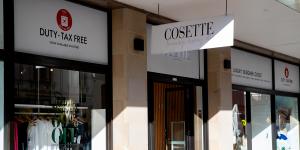
Cosette has a store at The Rocks,Sydney,and a large online presence.Credit:Edwina Pickles
Several women interviewed for this story have detailed their experience buying bags they believed were authentic,but later they suspected were“superfakes”,the term used for high-quality copies – as opposed to cheap knock-offs sold in tourist markets that are obviously fake – that are much harder to differentiate from the real thing. But there are still ways.
Cosette,which has a shopfront in Sydney’s The Rocks,as well as an online store,insists it only sells genuine bags it obtains through “authorised resellers,retailers,brokers and licensees” in Europe,according to a written statement provided in response to detailed questions from this masthead.
“All of the bags we sell are 100 per cent authentic and we take great care in verifying the authenticity of each and every product we offer,” the company’s customer service team wrote in several emails to the women (as seen by this masthead),a point it reiterated in response to questions for this story,which is a joint venture withA Current Affair.
But the women,as well as several industry experts,believe that although Cosette sells some authentic designer goods,it sold them high-quality fakes at prices that are much closer to the genuine bags.
A weird ‘plastic-like and chemical’ smell
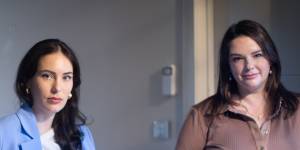
Milana De Mina (left) and Erin Kostopulos,two women who claim they bought fakes from Cosette.Credit:Simon Schluter
After Cameron obtained the certificate alleging her bag was fake,she contacted Cosette,which offered to run another check on the bag,or issue a refund in line with its seven-day returns’ policy. “They just wanted me to apply for the refund and drop the matter,” says Cameron,who is speaking out in the hope she may help other women in a similar position.
Cosette denies that refunding Cameron’s money amounts to an admission that the bag was fake:“Despite (and not because of) the incorrect belief that the bags were fake ... the customers were immediately and fully refunded under Cosette’s returns policy or as a gesture of goodwill as we care about customer satisfaction. Any claims that we sell fake bags or that these refunds imply that we have admitted that we sell fake bags are false,” the company wrote in a statement to this masthead.
Milana De Mina,a 35-year-old stylist from Melbourne,paid $1767 for a Prada bag from Cosette in April that,upon receipt,she believed was fake. “They justify their whole pricing structure reasonably,” she says. “When it comes to certain brands,it makes sense. I have been to the Prada outlets in Hong Kong and you can get great stuff for cheap.”
In June 2022,De Mina purchased a Jacquemus bag from Cosette for $870 that she is confident is authentic. But when she opened her black Prada Re-Edition 2005 Nylon bag,she noticed a weird “plastic-like and chemical” smell. De Mina contacted Cosette,but did not seek her own authentication certificate. Cosette assured her the bag was authentic,but still granted her a refund.
De Mina’s friend,marketing manager Erin Kostopulos,39,had her black Gucci Marmont camera bag for two years before she realised it was possibly a superfake. “I was cautious before making the purchase,I did my research,” she says.
Kostopulos bought the bag from Cosette in July 2021 for $1500,substantially less than the $2300 recommended retail price at the time. “It wasn’t so cheap that it seemed illegitimate,which made me think they were getting it from some supplier.”
After De Mina’s experience with the Prada bag,Kostopulos decided to have her Gucci bag independently verified. The result:fake. She took the claims to Cosette,which stood by their authentication,but still agreed to refund her money.
Cosette rejected the “results on authenticity” obtained by Kostopulos and Cameron. The company says that when the women returned the bags,it sent them for re-testing,“which again authenticated the goods”. Cosette stated:“Based on different photos,third-party authenticators may obtain different results. Cosette stands by the authenticity of the goods and any claims that Cosette falsified authentication or swapped real bags for fake are false.”
Several of the women who spoke to this masthead say they took their complaints to their state’s consumer affairs authorities. However,a spokesman for NSW Fair Trading said Cosette was not on the state’s complaints register,which lists all businesses that are subject to 10 or more complaints in a calendar month.
Comment was sought from the luxury brands mentioned in the story,but all declined to comment or did not respond before deadline.
A ‘victimless’ crime?
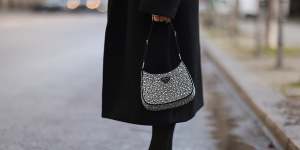
The Prada Re-Edition 2005 Nylon bag has been popular with celebrities and the street-style set.Credit:Getty
The booming secondary market in designer goods means there is huge demand for authentication services. Alex Leung worked in risk management for a bank until five years ago,when he and his wife started Melbourne-based designer resale business The Purse Affair,which also authenticates bags. Whereas many authenticators rely on photos and AI to check items,Leung uses a combination of physical and digital processes. These range from checking font sizes and serial numbers,to the depth of the engraving and the number of stitches on a component.
He says there are several telltale signs of a fake but agrees they are getting harder to spot. “The higher the value[of the bag] the more we pay attention,” he says. The counterfeit “industry”,he says,is “like cybersecurity,it’s constantly moving,it’s constantly dynamic”. But,he says,nothing can replace human knowledge. Leung can spot a fake Hermes Birkin,especially if one comes in with an authenticity card – no such card exists.
Leung says the difficulty with AI-based authentication,indeed any type,is that it’s not foolproof. “[AI] is a great tool but if the gun is in the wrong person’s hands then ... I could do the authenticating on the real bag[but sell a fake],” he says.
One of the world’s biggest AI authenticators is Entrupy,which has tested about $50 million worth of luxury bags in Australia. Founder Vidyuth Srinivasan says about 5.7 per cent of these are classified as “unidentified”,meaning Entrupy is unable to certify them as authentic. The most common brands in this category are Goyard,Dior,Prada,Saint Laurent and Gucci.
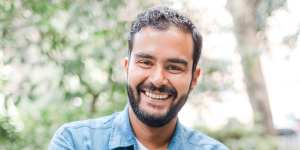
Vidyuth Srinivasan,founder of authentication company Entrupy.
Srinivasan says Entrupy’s database is built on millions of samples,some of which he acquired himself on the black market for research. He agrees the problem of superfakes is getting worse,in part due to demand for designer labels among young people. And although the quality is improving,“there is a certain cap to it”,he says via Zoom. “Counterfeiters rely on piggybacking on someone else’s brand. They want to make it as good as possible but as cheap as possible.”
He says not only is the manufacturing of fakes often linked to criminal networks and slave labour,but they can also be made from dangerous materials,including toxic chemicals. “People don’t realise when these items rub against your skin,they’re immediately detrimental to you,” Srinivasan says.
It’s a view shared by Kimberlee Stamatis,assistant secretary of customs and trade policy for Australian Border Force. “It’s a serious health concern ... people perceive[counterfeits] to be a victimless crime,but there’s also a health and safety risk.”
Last financial year,Border Force seized more than 88,000 counterfeit items,ranging from car parts to electronics,pharmaceuticals and,of course,handbags,totalling more than $32 million,based on the value of the goods if legitimate.
Nikita Chen,the 21-year-old founder of Legitgrails,adds that the luxury brands are fighting back,including by investing in blockchain and other technologies to build authentication tools into the bags,and deter counterfeiters. He thinks by 2030 the problem of fakes will be heavily diminished.
‘Sick in the stomach’
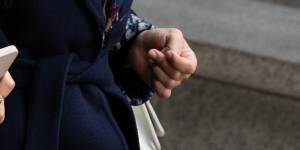
Caroline Di Russo,of Luxury Authentication Australia,says conterfeiters are even copying luxury brands’ shopping bags.Credit:Bloomberg
Despite attempts by brands and law-enforcement to clamp down on counterfeits,plenty of items are getting through the web,and in an ever more sophisticated form,says Caroline Di Russo,who co-ownsLuxury Authentication Australia and is a lawyer. “I have seen a fake Chanel bag come with fake tissue,fake box ... and fake shopping bag,” she says. “And the quality is becoming better and better all the time.”
She agrees the only way a shopper is guaranteed a real bag is to buy it from the brand’s own stores,even though there have been some instances of “return fraud” – the practice of buying a real bag and returning a fake one in its place. The phenomenon even inspired the 2022 novelCounterfeit by Kirstin Chen.
Still,Di Russo doesn’t want the prevalence of fakes to deter people from buying preloved items. “There is no authentication method that is 100 per cent certain,” she says. “But ... if things have been authenticated,there’s a chance an expert has had their eye over it and that should give you comfort.”
That’s what human resources executive Nina Pitt,39,thought when she bought her Prada bag from Cosette in March. She’d been storing it in a closet for a later overseas trip when,around Easter,she noticed a Facebook thread filled with complaints about Cosette. She checked her bag’s authentication certificate,but when it returned an error message,she realised there could be a problem.
“Don’t get me wrong,it was a good copy,” she says. “A friend bought the same bag – she is just using it and pretending it’s real.”
Pitt,who lives in Brisbane,askedReal Authentication to run the process again – her bag was deemed fake by the company. “I felt pretty sick in the stomach,” she says. Pitt hoped that because she paid using PayPal she would have more luck getting a refund. In the end,she got her money back from Cosette after raising a dispute. Cosette insists the bag was genuine and had been authenticated.
While most of the women,including Pitt,got their money back,Erin Kostopulos says it’s also about ethics. “I feel really disappointed,” she says. “I don’t like being lied to or cheated and I feel almost a bit embarrassed ... If you want to buy something fake you should be paying a ‘fake’ price. Some people save up for years to have something of this value. I bought that bag because I had achieved a lot in my life,and I wanted to treat myself. The experience sort of took that away.”
With Hannah Sinclair
Make the most of your health,relationships,fitness and nutrition with our Live Well newsletter.Get it in your inbox every Monday.